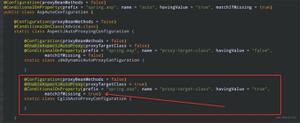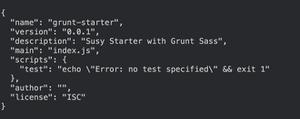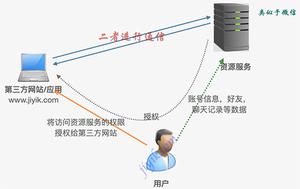springboot基于shiro/springsecurity实现自定义登录

shiro
shiro 配置文件
/** * Shiro配置
*/
@Configuration
@RequiredArgsConstructor
public class ShiroConfig {
private final ShiroService shiroService;
private final SysUserTokenService sysUserTokenService;
private final SysCaptchaService sysCaptchaService;
private final Gson gson;
/**
* 自定义权限管理
*
* @see ShiroConfiguration
* @see DefaultSecurityManager
*/
@Bean("securityManager")
public DefaultWebSecurityManager defaultWebSecurityManager() {
DefaultWebSecurityManager defaultWebSecurityManager = new DefaultWebSecurityManager();
// realms
ArrayList<Realm> realms = new ArrayList<>();
realms.add(userAuthenticatingRealm());
realms.add(tokenAuthorizingRealm());
defaultWebSecurityManager.setRealms(realms);
DefaultSubjectDAO subjectDAO = new DefaultSubjectDAO();
DefaultSessionStorageEvaluator defaultSessionStorageEvaluator = new DefaultSessionStorageEvaluator();
// disable session
defaultSessionStorageEvaluator.setSessionStorageEnabled(false);
subjectDAO.setSessionStorageEvaluator(defaultSessionStorageEvaluator);
defaultWebSecurityManager.setSubjectDAO(subjectDAO);
// cache
defaultWebSecurityManager.setCacheManager(new MemoryConstrainedCacheManager());
return defaultWebSecurityManager;
}
@Bean
public Realm userAuthenticatingRealm() {
UserAuthenticatingRealm userAuthenticatingRealm = new UserAuthenticatingRealm();
userAuthenticatingRealm.setShiroService(shiroService);
userAuthenticatingRealm.setSysCaptchaService(sysCaptchaService);
PasswordMatcher passwordMatcher = new PasswordMatcher();
passwordMatcher.setPasswordService(passwordService());
userAuthenticatingRealm.setCredentialsMatcher(passwordMatcher);
return userAuthenticatingRealm;
}
@Bean
public Realm tokenAuthorizingRealm() {
TokenAuthorizingRealm tokenAuthorizingRealm = new TokenAuthorizingRealm();
tokenAuthorizingRealm.setShiroService(shiroService);
return tokenAuthorizingRealm;
}
/**
* @see DefaultFilter
*/
@Bean
public ShiroFilterChainDefinition shiroFilterChainDefinition() {
DefaultShiroFilterChainDefinition chainDefinition = new DefaultShiroFilterChainDefinition();
chainDefinition.addPathDefinition("/sys/login", "user_authc");
chainDefinition.addPathDefinition("/sys/logout", "anon");
chainDefinition.addPathDefinition("/sys/**", "token_authc");
chainDefinition.addPathDefinition("/manage/**", "anon");
chainDefinition.addPathDefinition("/wx/**", "anon");
chainDefinition.addPathDefinition("/**", "anon");
return chainDefinition;
}
@Bean(name = "user_authc")
public UserFilter userAuthenticatingFilter() {
UserFilter userFilter = new UserFilter();
userFilter.setSysUserTokenService(sysUserTokenService);
userFilter.setGson(gson);
return userFilter;
}
@Bean(name = "token_authc")
public TokenFilter tokenAuthenticatingFilter() {
return new TokenFilter();
}
/**
* 总过滤器
*
* @param securityManager { @link #defaultWebSecurityManager }
* @param shiroFilterChainDefinition { @link #shiroFilterChainDefinition }
*/
@Bean(name = "shiroFilterFactoryBean")
public ShiroFilterFactoryBean shiroFilter(SecurityManager securityManager,
ShiroFilterChainDefinition shiroFilterChainDefinition,
Map<String, Filter> filterMap) {
ShiroFilterFactoryBean filterFactoryBean = new ShiroFilterFactoryBean();
filterFactoryBean.setSecurityManager(securityManager);
filterFactoryBean.setFilterChainDefinitionMap(shiroFilterChainDefinition.getFilterChainMap());
filterFactoryBean.setFilters(filterMap);
return filterFactoryBean;
}
/**
* 非接口使用 cglib,防止额外的 aop 导致 @RequiresPermissions 注解失效
*/
@ConditionalOnMissingBean
@Bean
@DependsOn("lifecycleBeanPostProcessor")
public DefaultAdvisorAutoProxyCreator defaultAdvisorAutoProxyCreator() {
DefaultAdvisorAutoProxyCreator proxyCreator = new DefaultAdvisorAutoProxyCreator();
// 非接口使用 cglib
proxyCreator.setProxyTargetClass(true);
return proxyCreator;
}
@ConditionalOnMissingBean
@Bean
public PasswordService passwordService() {
return new DefaultPasswordService();
}
}
认证
/** * AuthenticationToken —— 待认证 token
*/
public class UserAuthentication implements AuthenticationToken {
private static final long serialVersionUID = 1L;
private final Object principal;
private Object credentials;
/**
* 验证码
*/
private String captcha;
private String uuid;
private boolean refresh;
/**
* 需要进行认证
*/
public UserAuthentication(Object principal, Object credentials) {
this.principal = principal;
this.credentials = credentials;
}
/**
* 需要进行认证(附带验证码)
*/
public UserAuthentication(Object principal, Object credentials, String captcha) {
this.principal = principal;
this.credentials = credentials;
this.captcha = captcha;
}
/**
* 需要进行认证(附带验证码)
*/
public UserAuthentication(Object principal, Object credentials, String captcha, String uuid) {
this.principal = principal;
this.credentials = credentials;
this.captcha = captcha;
this.uuid = uuid;
}
/**
* 以旧换新, 无须通过密码校验
*/
public UserAuthentication(Object principal, boolean refresh) {
this.principal = principal;
this.refresh = refresh;
}
@Override
public Object getPrincipal() {
return principal;
}
@Override
public Object getCredentials() {
return credentials;
}
public String getCaptcha() {
return captcha;
}
public String getUuid() {
return uuid;
}
}
filter
/** * 自定义 AuthenticatingFilter 认证过滤器
* <p>
* 登录认证
*/
@Slf4j
public class UserFilter extends AuthenticatingFilter {
private SysUserTokenService sysUserTokenService;
private Gson gson;
/**
* 返回待 AuthorizingRealm 认证的 AuthenticationToken, 参见 {@link UserAuthenticatingRealm#doGetAuthenticationInfo}
*/
@Override
protected AuthenticationToken createToken(ServletRequest request, ServletResponse response) throws Exception {
HttpServletRequest req = (HttpServletRequest) request;
ServletInputStream inputStream = req.getInputStream();
InputStreamReader reader = new InputStreamReader(inputStream);
JsonObject jsonObject = getGson().fromJson(reader, JsonObject.class);
String principle = jsonObject.get(obtainUsernameParam()).getAsString();
String credentials = jsonObject.get(obtainPasswordParam()).getAsString();
String captcha = jsonObject.get(obtainCaptchaParam()).getAsString();
String uuid = jsonObject.get(obtainUuidParam()).getAsString();
return new UserAuthentication(principle, credentials, captcha, uuid);
}
/**
* 判断是否是登录请求
*/
@Override
public String getLoginUrl() {
return SecurityConstant.loginUrl;
}
/**
* 放行非登录请求(如 logout)
*/
@Override
protected boolean isAccessAllowed(ServletRequest request, ServletResponse response, Object mappedValue) {
return super.isAccessAllowed(request, response, mappedValue);
}
/**
* 拦截登录请求 —> 执行
*/
@Override
protected boolean onAccessDenied(ServletRequest request, ServletResponse response) throws Exception {
if (isLoginRequest(request, response)) {
if (isLoginSubmission(request, response)) {
super.executeLogin(request, response);
} else {
//可能是登录页,故不禁止访问
return true;
}
}
return false;
}
/**
* 登录失败回调
*/
@SuppressWarnings("Duplicates")
@SneakyThrows
@Override
protected boolean onLoginFailure(AuthenticationToken token, AuthenticationException exp, ServletRequest request, ServletResponse response) {
HttpServletResponse httpServletResponse = (HttpServletResponse) response;
Map<String, Object> map = new HashMap<>();
String errorMsg = "未知异常";
int errorCode = 500;
if (exp instanceof CaptchaInvalidException) {
errorMsg = "验证码填写错误";
} else if (exp instanceof UnknownAccountException) {
errorMsg = "账号不存在";
} else if (exp instanceof CredentialsException) {
errorMsg = "密码错误";
} else if (exp instanceof LockedAccountException) {
errorMsg = "账号已锁定";
} else {
log.error("login fail {}", exp.getMessage());
}
map.put("code", errorCode);
map.put("msg", errorMsg);
map.put("success", false);
httpServletResponse.setContentType("application/json");
httpServletResponse.setStatus(HttpServletResponse.SC_OK);
try {
ObjectMapper mapper = new ObjectMapper();
mapper.writeValue(httpServletResponse.getOutputStream(), map);
} catch (Exception er) {
throw new ServletException();
}
// 尝试重新登录
return true;
}
/**
* 登录成功回调
*/
@SuppressWarnings("Duplicates")
@Override
protected boolean onLoginSuccess(AuthenticationToken token, Subject subject, ServletRequest request, ServletResponse response) throws Exception {
HttpServletResponse httpServletResponse = (HttpServletResponse) response;
SysUserEntity userEntity = (SysUserEntity) SecurityUtils.getSubject().getPrincipal();
Result r = getSysUserTokenService().createToken(userEntity.getUserId());
httpServletResponse.setContentType("application/json");
httpServletResponse.setStatus(HttpServletResponse.SC_OK);
try {
ObjectMapper mapper = new ObjectMapper();
mapper.writeValue(httpServletResponse.getOutputStream(), r);
} catch (Exception e) {
throw new ServletException();
}
return true;
}
protected String obtainUsernameParam() {
return "username";
}
protected String obtainPasswordParam() {
return "password";
}
protected String obtainCaptchaParam() {
return "captcha";
}
protected String obtainUuidParam() {
return "uuid";
}
protected boolean isLoginSubmission(ServletRequest request, ServletResponse response) {
return (request instanceof HttpServletRequest) && WebUtils.toHttp(request).getMethod().equalsIgnoreCase(POST_METHOD);
}
public SysUserTokenService getSysUserTokenService() {
Assert.notNull(this.sysUserTokenService, "sysUserTokenService is needed");
return sysUserTokenService;
}
public void setSysUserTokenService(SysUserTokenService sysUserTokenService) {
this.sysUserTokenService = sysUserTokenService;
}
public Gson getGson() {
Assert.notNull(this.gson, "gson is needed");
return gson;
}
public void setGson(Gson gson) {
this.gson = gson;
}
}
AuthenticatingRealm
/** * 用户登录认证
*/
public class UserAuthenticatingRealm extends AuthenticatingRealm {
private ShiroService shiroService;
private SysCaptchaService sysCaptchaService;
public void setShiroService(ShiroService shiroService) {
this.shiroService = shiroService;
}
public SysCaptchaService getSysCaptchaService() {
Assert.notNull(this.sysCaptchaService, "getSysCaptchaService is needed");
return sysCaptchaService;
}
public void setSysCaptchaService(SysCaptchaService sysCaptchaService) {
this.sysCaptchaService = sysCaptchaService;
}
@Override
public boolean supports(AuthenticationToken token) {
return token instanceof UserAuthentication;
}
/**
* 认证
* <p>
* 从数据库查询真实个人信息
*
* @see org.apache.shiro.realm.AuthenticatingRealm#getAuthenticationInfo
* @see org.apache.shiro.realm.AuthenticatingRealm#assertCredentialsMatch
*/
@Override
protected AuthenticationInfo doGetAuthenticationInfo(AuthenticationToken authenticationToken) throws AuthenticationException {
// 校验验证码
UserAuthentication userAuthentication = (UserAuthentication) authenticationToken;
String captcha = userAuthentication.getCaptcha();
String uuid = userAuthentication.getUuid();
boolean validated = getSysCaptchaService().validate(uuid, captcha);
if (!validated) {
throw new CaptchaInvalidException("验证码无效");
}
String username = (String) authenticationToken.getPrincipal();
SysUserEntity user = shiroService.queryByUsername(username);
if (user == null) {
throw new UnknownAccountException("账号不存在");
} else if (user.getStatus() == 0) {
throw new LockedAccountException("账号已被锁定, 请联系管理员");
}
return new SimpleAuthenticationInfo(user, user.getPassword(), getName());
}
}
AuthenticationException
public class CaptchaInvalidException extends AuthenticationException { public CaptchaInvalidException(String msg) {
super(msg);
}
}
鉴权与授权
/** * AuthenticationToken —— 待认证 token
*/
public class XxAuthenticationToken implements AuthenticationToken {
private static final long serialVersionUID = 1L;
private final String token;
public XxAuthenticationToken(String token) {
this.token = token;
}
@Override
public Object getPrincipal() {
return token;
}
@Override
public Object getCredentials() {
return token;
}
public String getToken() {
return token;
}
}
filter
@Slf4j
public class TokenFilter extends AuthenticatingFilter {
protected static final String AUTHORIZATION_HEADER = "token";
@Override
protected AuthenticationToken createToken(ServletRequest request, ServletResponse response) throws Exception {
String token = extractRequestToken(request);
return new XxAuthenticationToken(token);
}
@Override
protected boolean isAccessAllowed(ServletRequest request, ServletResponse response, Object mappedValue) {
// super.isAccessAllowed 基于 session 级别放行,这里进行重写
// or call org.apache.shiro.mgt.DefaultSessionStorageEvaluator.setSessionStorageEnabled to disable the session
return false;
}
@Override
protected boolean onAccessDenied(ServletRequest request, ServletResponse response) throws Exception {
boolean loggedIn = false;
if (isLoginRequest(request, response)) {
loggedIn = executeLogin(request, response);
}
if (!loggedIn) {
//认证失败,提示 token 无效
Map<String, Object> map = new HashMap<>();
String errorMsg = "invalid token";
int errorCode = 500;
map.put("code", errorCode);
map.put("msg", errorMsg);
map.put("success", false);
HttpServletResponse httpResponse = WebUtils.toHttp(response);
httpResponse.setContentType("application/json");
httpResponse.setStatus(HttpServletResponse.SC_OK);
try {
ObjectMapper mapper = new ObjectMapper();
mapper.writeValue(httpResponse.getOutputStream(), map);
} catch (Exception er) {
throw new ServletException();
}
}
return loggedIn;
}
@Override
protected final boolean isLoginRequest(ServletRequest request, ServletResponse response) {
return StringUtils.isNotBlank(extractRequestToken(request));
}
private String extractRequestToken(ServletRequest request) {
HttpServletRequest httpRequest = WebUtils.toHttp(request);
String token = httpRequest.getHeader(AUTHORIZATION_HEADER);
if (StringUtils.isBlank(token)) {
token = httpRequest.getParameter(AUTHORIZATION_HEADER);
}
return token;
}
}
realm
/** * 基于 token 的 鉴权与授权
*/
public class TokenAuthorizingRealm extends AuthorizingRealm {
private ShiroService shiroService;
public ShiroService getShiroService() {
Assert.notNull(this.shiroService, "shiroService is needed");
return shiroService;
}
public void setShiroService(ShiroService shiroService) {
this.shiroService = shiroService;
}
@Override
public boolean supports(AuthenticationToken token) {
return token instanceof XxAuthenticationToken;
}
/**
* 认证
*
* 从数据库查询真实个人信息
*
* @see org.apache.shiro.realm.AuthenticatingRealm#getAuthenticationInfo
* @see org.apache.shiro.realm.AuthenticatingRealm#assertCredentialsMatch
*/
@Override
protected AuthenticationInfo doGetAuthenticationInfo(AuthenticationToken authenticationToken) throws AuthenticationException {
String accessToken = (String) authenticationToken.getPrincipal();
SysUserTokenEntity tokenEntity = shiroService.queryByToken(accessToken);
if (tokenEntity == null || tokenEntity.getExpireTime().getTime() < System.currentTimeMillis()) {
throw new IncorrectCredentialsException("token失效,请重新登录");
}
SysUserEntity user = shiroService.queryUser(tokenEntity.getUserId());
if (user.getStatus() == 0) {
throw new LockedAccountException("账号已被锁定,请联系管理员");
}
return new SimpleAuthenticationInfo(user, accessToken, getName());
}
/**
* 授权
*
* 从数据库获取权限信息
*
* @see org.apache.shiro.realm.AuthorizingRealm#isPermitted
*/
@Override
protected AuthorizationInfo doGetAuthorizationInfo(PrincipalCollection principals) {
SysUserEntity user = (SysUserEntity) principals.getPrimaryPrincipal();
Long userId = user.getUserId();
//用户权限列表
Set<String> permsSet = getShiroService().getUserPermissions(userId);
SimpleAuthorizationInfo info = new SimpleAuthorizationInfo();
info.setStringPermissions(permsSet);
return info;
}
}
Spring Security
spring security 配置文件
@EnableWebSecurity@AllArgsConstructor
@EnableGlobalMethodSecurity(prePostEnabled = true, securedEnabled = true)
public class SecurityConf extends WebSecurityConfigurerAdapter {
private TokenAuthenticationConfig tokenAuthenticationConfig;
private CorsFilter corsFilter;
private IPermissionService permissionService;
@Override
protected void configure(HttpSecurity http) throws Exception {
ExpressionUrlAuthorizationConfigurer<HttpSecurity>.ExpressionInterceptUrlRegistry registry = http.csrf().disable()
.addFilterBefore(corsFilter, UsernamePasswordAuthenticationFilter.class)
.exceptionHandling()
.authenticationEntryPoint(new Http401UnAuthEntryPoint())
.accessDeniedHandler(new XxAccessDeniedHandler())
.and()
.headers()
.frameOptions()
.disable()
// create no session
.and()
.sessionManagement()
.sessionCreationPolicy(SessionCreationPolicy.STATELESS)
.and()
.authorizeRequests()
.antMatchers("/doc.htm**", "/service-worker.js",
"/v2/api-docs", "/configuration/ui", "/swagger-resources/**", "/v2/api-docs-ext",
"/configuration/security", "/swagger-ui.html", "/webjars/**",
"/favicon.ico", "/static/**",
"/acc/**", "/third/**", "/public/**"
).permitAll();
registry.antMatchers("/actuator/**")
.hasRole("ADMIN");
plusPermissions(registry);
registry
.anyRequest()
.authenticated()
.and()
.apply(tokenAuthenticationConfig);
}
@Bean
@Override
public AuthenticationManager authenticationManagerBean() throws Exception {
return super.authenticationManagerBean();
}
private void plusPermissions(ExpressionUrlAuthorizationConfigurer<HttpSecurity>.ExpressionInterceptUrlRegistry registry) {
List<Permission> permissions = permissionService.list();
if (CollectionUtil.isNotEmpty(permissions)) {
permissions.forEach(permission -> {
String urls = permission.getUrls();
if (StringUtil.isNotBlank(urls)) {
String[] urlArr = urls.split(",");
String curPerm = "PERMISSION_" + permission.getCode();
String access = String.format("hasRole("%s") or hasAuthority("%s")", RoleName.ADMIN.getName(), curPerm);
if (urlArr.length > 0) {
registry.antMatchers(urlArr)
.access(access);
}
}
});
}
}
}
认证
public class TokenAuthentication extends AbstractAuthenticationToken { private static final long serialVersionUID = SpringSecurityCoreVersion.SERIAL_VERSION_UID;
private final Object principal;
private Object credentials;
/**
* 认证前
*/
public TokenAuthentication(Object principal, Object credentials) {
super(null);
this.principal = principal;
this.credentials = credentials;
setAuthenticated(false);
}
/**
* 认证后
*/
public TokenAuthentication(Object principal, Object credentials,
Collection<? extends GrantedAuthority> authorities) {
super(authorities);
this.principal = principal;
this.credentials = credentials;
super.setAuthenticated(true); // must use super, as we override
}
@Override
public Object getCredentials() {
return this.credentials;
}
@Override
public Object getPrincipal() {
return this.principal;
}
@Override
public void eraseCredentials() {
super.eraseCredentials();
credentials = null;
}
@Override
public void setAuthenticated(boolean isAuthenticated) throws IllegalArgumentException {
if (isAuthenticated) {
throw new IllegalArgumentException(
"Cannot set this token to trusted - use constructor which takes a GrantedAuthority list instead");
}
super.setAuthenticated(false);
}
}
filter
/** * doFilter 负责预鉴权(验证码,安全码是否一致)
* attemptAuthentication 负责提取 token
*/
@Slf4j
public class TokenAuthenticationFilter extends AbstractAuthenticationProcessingFilter {
private TokenService tokenService;
public TokenAuthenticationFilter() {
super(new AntPathRequestMatcher(SecurityConstant.LOGIN_URL, "POST"));
}
public void setTokenService(TokenService tokenService) {
this.tokenService = tokenService;
}
public TokenService getTokenService() {
Assert.notNull(this.tokenService, "tokenService is needed");
return this.tokenService;
}
/**
* 鉴权
* - 路由规则匹配
* - 验证码校验(短信验证码或阿里云人机校验)
*/
@Override
public void doFilter(ServletRequest request, ServletResponse response, FilterChain chain) throws IOException, ServletException {
HttpServletRequest req = (HttpServletRequest) request;
HttpServletResponse res = (HttpServletResponse) response;
// 判断是否是登录请求 LOGIN_URL
if (!requiresAuthentication(req, res)) {
chain.doFilter(request, response);
return;
}
try {
// 校验参数与验证码
getTokenService().checkParams(req, res);
} catch (AuthenticationException error) {
unsuccessfulAuthentication(req, res, error);
return;
}
super.doFilter(req, res, chain);
}
/**
* 返回一个待 Provider 认证的 token(TokenAuthentication)
*/
@Override
public Authentication attemptAuthentication(HttpServletRequest request, HttpServletResponse response) throws AuthenticationException, IOException, ServletException {
// 拦截非 POST 请求
if (!request.getMethod().equals(HttpMethod.POST.name())) {
throw new AuthenticationServiceException(
"Authentication method not supported: " + request.getMethod());
}
TokenAuthentication tokenAuthentication = new TokenAuthentication(obtainUsername(request), obtainPassword(request));
return this.getAuthenticationManager().authenticate(tokenAuthentication);
}
@Nullable
protected String obtainUsername(HttpServletRequest request) {
return request.getParameter("username");
}
@Nullable
protected String obtainPassword(HttpServletRequest request) {
return request.getParameter("password");
}
}
provider
/** * 认证, 返回已认证的 token(Authentication)
*/
public class TokenAuthenticationProvider implements AuthenticationProvider {
protected final Log logger = LogFactory.getLog(getClass());
private UserDetailsService userDetailsService;
private PasswordEncoder passwordEncoder;
private BlackTool blackTool;
private static final String USER_NOT_FOUND_PASSWORD = "userNotFoundPassword";
private volatile String userNotFoundEncodedPassword;
private UserDetailsChecker preAuthenticationChecks = new TokenAuthenticationProvider.DefaultPreAuthenticationChecks();
private UserCache userCache = new NullUserCache();
public void setUserDetailsService(UserDetailsService userDetailsService) {
this.userDetailsService = userDetailsService;
}
public void setPasswordEncoder(PasswordEncoder passwordEncoder) {
this.passwordEncoder = passwordEncoder;
}
public void setBlackTool(BlackTool blackTool) {
this.blackTool = blackTool;
}
public UserDetailsService getUserDetailsService() {
Assert.notNull(this.userDetailsService, "userDetailsService could not be null");
return userDetailsService;
}
public PasswordEncoder getPasswordEncoder() {
Assert.notNull(this.passwordEncoder, "passwordEncoder could not be null");
return passwordEncoder;
}
public BlackTool getBlackTool() {
Assert.notNull(this.blackTool, "blackTool could not be null");
return blackTool;
}
/**
* i18n 字符串
*/
protected MessageSourceAccessor messages = SpringSecurityMessageSource.getAccessor();
@Override
public Authentication authenticate(Authentication authentication) throws AuthenticationException {
// 校验 token 的 class 类型
Assert.isInstanceOf(TokenAuthentication.class, authentication,
messages.getMessage(
"SocialAuthenticationProvider.onlySupports",
"Only SocialAuthenticationToken is supported"));
// 通过 username 提取用户信息
String username = (authentication.getPrincipal() == null) ? "NONE_PROVIDED"
: authentication.getName();
//检查是否在黑名单中
checkBlackList(username);
// 从缓存中获取用户信息
boolean cacheWasUsed = true;
UserDetails user = this.userCache.getUserFromCache(username);
// 缓存中没有,则从数据库中获取用户信息
if (user == null) {
cacheWasUsed = false;
try {
user = this.retrieveUser(username, (TokenAuthentication) authentication);
} catch (UsernameNotFoundException notFound) {
logger.debug("User username "" + username + "" not found");
throw notFound;
}
Assert.notNull(user,
"retrieveUser returned null - a violation of the interface contract");
}
//检查信息是否匹配有效
try {
preAuthenticationChecks.check(user);
// password check
checkPassword(user, (TokenAuthentication) authentication);
} catch (AuthenticationException exception) {
//重新再试一下
if (cacheWasUsed) {
// There was a problem, so try again after checking
// we"re using latest data (i.e. not from the cache)
cacheWasUsed = false;
user = retrieveUser(username,
(TokenAuthentication) authentication);
preAuthenticationChecks.check(user);
checkPassword(user,
(TokenAuthentication) authentication);
} else {
throw exception;
}
}
// 加入缓存
if (!cacheWasUsed) {
this.userCache.putUserInCache(user);
}
TokenAuthentication authenticationToken = new TokenAuthentication(user, null, user.getAuthorities());
authenticationToken.setDetails(user);
return authenticationToken;
}
/**
* 过滤该 provider 支持认证的 authentication
*/
@Override
public boolean supports(Class<?> authentication) {
return TokenAuthentication.class.isAssignableFrom(authentication);
}
private class DefaultPreAuthenticationChecks implements UserDetailsChecker {
public void check(UserDetails user) {
if (!user.isAccountNonLocked()) {
logger.debug("User account is locked");
throw new LockedException(messages.getMessage(
"AbstractUserDetailsAuthenticationProvider.locked",
"User account is locked"));
}
if (!user.isEnabled()) {
logger.debug("User account is disabled");
throw new DisabledException(messages.getMessage(
"AbstractUserDetailsAuthenticationProvider.disabled",
"User is disabled"));
}
if (!user.isAccountNonExpired()) {
logger.debug("User account is expired");
throw new AccountExpiredException(messages.getMessage(
"AbstractUserDetailsAuthenticationProvider.expired",
"User account has expired"));
}
}
}
public void checkBlackList(String blackKey) {
if (getBlackTool().existInBlackList(blackKey)) {
// 在黑名单中,拒绝访问
throw new AuthFrequentFailException("您已连续5次密码输入错误,请15分钟后再试");
}
}
/**
* 连续多次输入错误,直接禁止登录
*/
public void checkPassword(UserDetails userDetails,
TokenAuthentication authentication) throws AuthenticationException {
if (authentication.getCredentials() == null) {
logger.debug("Authentication failed: no credentials provided");
throw new BadCredentialsException(messages.getMessage(
"AbstractUserDetailsAuthenticationProvider.badCredentials",
"Bad credentials"));
}
String blackKey = authentication.getPrincipal().toString();
String presentedPassword = authentication.getCredentials().toString();
if (!getPasswordEncoder().matches(presentedPassword, userDetails.getPassword())) {
logger.debug("Authentication failed: password does not match stored value");
// 黑名单计数
getBlackTool().incr(blackKey);
throw new BadCredentialsException(messages.getMessage(
"AbstractUserDetailsAuthenticationProvider.badCredentials",
"Bad credentials"));
}
// 黑名单重置
getBlackTool().reset(blackKey);
}
protected final UserDetails retrieveUser(String username,
TokenAuthentication authentication)
throws AuthenticationException {
prepareTimingAttackProtection();
try {
UserDetails loadedUser = this.getUserDetailsService().loadUserByUsername(username);
if (loadedUser == null) {
throw new InternalAuthenticationServiceException(
"UserDetailsService returned null, which is an interface contract violation");
}
return loadedUser;
} catch (UsernameNotFoundException ex) {
mitigateAgainstTimingAttack(authentication);
throw ex;
} catch (InternalAuthenticationServiceException ex) {
throw ex;
} catch (Exception ex) {
throw new InternalAuthenticationServiceException(ex.getMessage(), ex);
}
}
private void prepareTimingAttackProtection() {
if (this.userNotFoundEncodedPassword == null) {
this.userNotFoundEncodedPassword = this.passwordEncoder.encode(USER_NOT_FOUND_PASSWORD);
}
}
private void mitigateAgainstTimingAttack(TokenAuthentication authentication) {
if (authentication.getCredentials() != null) {
String presentedPassword = authentication.getCredentials().toString();
this.passwordEncoder.matches(presentedPassword, this.userNotFoundEncodedPassword);
}
}
}
TokenAuthenticationConfig
@Component@AllArgsConstructor
public class TokenAuthenticationConfig extends SecurityConfigurerAdapter<DefaultSecurityFilterChain, HttpSecurity> {
private TokenService tokenService;
private PasswordEncoder passwordEncoder;
private UserDetailsService userDetailsService;
private BlackTool blackTool;
@Override
public void configure(HttpSecurity http) {
// check filter
TokenCheckFilter checkFilter = new TokenCheckFilter(tokenService);
// handler
TokenFailHandler failHandler = new TokenFailHandler();
TokenSuccessHandler successHandler = new TokenSuccessHandler(tokenService);
// authentication filter
TokenAuthenticationFilter tokenFilter = new TokenAuthenticationFilter();
tokenFilter.setTokenService(tokenService);
tokenFilter.setAuthenticationManager(http.getSharedObject(AuthenticationManager.class));
tokenFilter.setAuthenticationSuccessHandler(successHandler);
tokenFilter.setAuthenticationFailureHandler(failHandler);
// provider
TokenAuthenticationProvider tokenProvider = new TokenAuthenticationProvider();
tokenProvider.setPasswordEncoder(passwordEncoder);
tokenProvider.setUserDetailsService(userDetailsService);
tokenProvider.setBlackTool(blackTool);
http.authenticationProvider(tokenProvider)
.addFilterBefore(checkFilter, UsernamePasswordAuthenticationFilter.class)
.addFilterAfter(tokenFilter, UsernamePasswordAuthenticationFilter.class);
}
}
401
public class Http401UnAuthEntryPoint implements AuthenticationEntryPoint { @Override
public void commence(HttpServletRequest request,
HttpServletResponse response,
AuthenticationException authException) throws IOException {
// This is invoked when user tries to access a secured REST resource without supplying any credentials
// We should just send a 401 Unauthorized response because there is no "login page" to redirect to
// Here you can place any message you want
response.sendError(HttpServletResponse.SC_UNAUTHORIZED, authException.getMessage());
}
}
403
@Slf4jpublic class XxAccessDeniedHandler implements AccessDeniedHandler {
@Override
public void handle(HttpServletRequest httpServletRequest, HttpServletResponse httpServletResponse, AccessDeniedException e) throws IOException, ServletException {
String requestURI = httpServletRequest.getRequestURI();
log.error("access {} wad denied.", requestURI, e);
httpServletResponse.setStatus(HttpServletResponse.SC_FORBIDDEN);
httpServletResponse.getWriter().write("access denied");
}
}
fail handler
@Slf4jpublic class TokenFailHandler implements AuthenticationFailureHandler {
@Override
public void onAuthenticationFailure(HttpServletRequest httpServletRequest, HttpServletResponse httpServletResponse, AuthenticationException exp) throws IOException, ServletException {
Map<String, Object> map = new HashMap<>();
String errorMsg = "未知异常";
int errorCode = 400;
if (exp instanceof UsernameNotFoundException) {
errorMsg = "账号不存在";
} else if (exp instanceof BadCredentialsException) {
errorMsg = "账号或密码错误";
errorCode = 401;
} else if (exp instanceof AuthParamFormatException) {
errorMsg = exp.getMessage();
} else if (exp instanceof AuthEmptyException) {
errorMsg = exp.getMessage();
} else if (exp instanceof AuthFrequentFailException) {
errorMsg = exp.getMessage();
errorCode = 403;
} else if(exp instanceof AuthAfsFailException) {
errorMsg = exp.getMessage();
errorCode = AfsConstant.FAIL_CODE;
} else if (exp instanceof DisabledException) {
errorMsg = "账号已被禁用";
} else if (exp instanceof AccountExpiredException) {
errorMsg = "账号过期";
} else if (exp instanceof LockedException) {
errorMsg = "该账号已被锁定";
} else if (exp instanceof InsufficientAuthenticationException) {
errorMsg = "验证失败";
} else{
log.error("auth error", exp);
}
map.put("code", errorCode);
map.put("msg", errorMsg);
map.put("success", false);
httpServletResponse.setContentType("application/json");
httpServletResponse.setStatus(HttpServletResponse.SC_OK);
try {
ObjectMapper mapper = new ObjectMapper();
mapper.writeValue(httpServletResponse.getOutputStream(), map);
} catch (Exception er) {
throw new ServletException();
}
}
}
success handler
public class TokenSuccessHandler implements AuthenticationSuccessHandler { private TokenService tokenService;
public TokenSuccessHandler(TokenService tokenService) {
this.tokenService = tokenService;
}
@Override
public void onAuthenticationSuccess(HttpServletRequest httpServletRequest, HttpServletResponse httpServletResponse, Authentication authentication) throws IOException, ServletException {
Map<String, Object> map = new HashMap<>();
map.put("code", 200);
map.put("success", true);
map.put("msg", "成功");
XxRequestToken xxRequestToken = tokenService.generateToken(authentication);
map.put("data", xxRequestToken);
httpServletResponse.setContentType("application/json");
httpServletResponse.setStatus(HttpServletResponse.SC_OK);
try {
XxUserDetails userDetails = SecurityUtil.getUserDetails(authentication);
if (userDetails != null) {
String ipAddr = IPUtil.getIpAddr(httpServletRequest);
SpringUtil.publishEvent(new LoginOkEvent(new LoginInfo(userDetails.getId(), ipAddr)));
}
ObjectMapper mapper = new ObjectMapper();
mapper.writeValue(httpServletResponse.getOutputStream(), map);
} catch (Exception e) {
throw new ServletException();
}
}
}
鉴权与授权
/** * 校验 token
*/
@Slf4j
public class TokenCheckFilter extends GenericFilterBean {
private static final String AUTHORIZATION_HEADER = "Authorization";
private TokenService tokenService;
public TokenCheckFilter(TokenService tokenService) {
this.tokenService = tokenService;
}
@Override
public void doFilter(ServletRequest servletRequest, ServletResponse servletResponse, FilterChain filterChain) throws IOException, ServletException {
HttpServletRequest req = (HttpServletRequest) servletRequest;
HttpServletResponse res = (HttpServletResponse) servletResponse;
String tokenKey = resolveToken(req);
String requestURI = req.getRequestURI();
boolean hasAuth = false;
if (StringUtils.hasText(tokenKey) && tokenService.validateToken(tokenKey)) {
Authentication authentication = tokenService.getAuthentication(tokenKey);
if (authentication != null) {
//authentication 中的 principle 可以转换为 XxUserDetails,供 SecurityUtil 提取权限信息
SecurityContextHolder.getContext().setAuthentication(authentication);
hasAuth = true;
}
}
if (requestURI.startsWith(SecurityConstant.LOGOUT_URL)) {
logout(hasAuth, tokenKey, res);
return;
}
filterChain.doFilter(servletRequest, servletResponse);
}
private String resolveToken(HttpServletRequest request) {
String bearerToken = request.getHeader(AUTHORIZATION_HEADER);
if (StringUtils.hasText(bearerToken) && bearerToken.startsWith("Bearer ")) {
return bearerToken.substring(7);
}
return null;
}
private void logout(boolean isAuthenticated, String tokenKey, HttpServletResponse response) throws ServletException {
Map<String, Object> map = new HashMap<>();
if (isAuthenticated && tokenService.offline(tokenKey)) {
map.put("code", 200);
map.put("success", true);
map.put("msg", "注销成功");
} else {
map.put("code", 400);
map.put("success", false);
map.put("msg", "注销失败/已注销");
}
response.setContentType("application/json");
response.setStatus(HttpServletResponse.SC_OK);
try {
ObjectMapper mapper = new ObjectMapper();
mapper.writeValue(response.getOutputStream(), map);
} catch (Exception e) {
throw new ServletException();
}
}
}
以上是 springboot基于shiro/springsecurity实现自定义登录 的全部内容, 来源链接: utcz.com/z/515547.html








